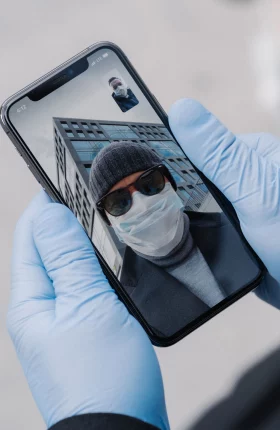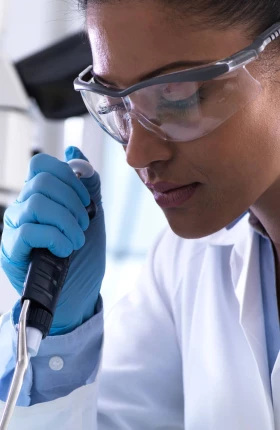A marked increase in new COVID-19 cases in multiple US states has put the issue of diagnostic testing back into the headlines. Some initially ascribed the increase (or much of it) to more and better testing, but as the number of new cases has mounted, there have been reports of long lines at testing sites, a shortage of tests in some locations, and long waits for results. Indeed, a big gap in overall testing capability remains—point-of-care, or on-the-spot, tests that tell people quickly and accurately if they have been infected.
Rapid point-of-care tests, which do not need to be sent to a laboratory for processing, are a critical piece of the larger testing puzzle.
As we have written previously, the ability to accurately diagnose the disease is a prerequisite for treating and ultimately overcoming it. Even once the pandemic has peaked, the need for testing will continue as governments and businesses look to reestablish public confidence and bring people back to work safely. Rapid point-of-care tests, which do not need to be sent to a laboratory for processing, are a critical piece of the larger testing puzzle. This kind of testing is essential to fight the spread of COVID-19 (or any communicable illness) until a cure or vaccine is developed and to restart social and economic life. Rapid and accurate point-of-care tests may, for example, be what is required to safely accelerate the recovery of the airline industry while the world waits for an effective vaccine.
Enter CRISPR
Technology may provide an answer. In recent years, CRISPR (clustered regularly interspaced short palindromic repeats), which enables precision genomic editing and provides a molecular biology tool and drug development platform, has been heralded as one of the most important innovations in biology. In 2015, Science magazine proclaimed CRISPR to be the “Breakthrough of the Year.” Several companies have begun using CRISPR in diagnostics that enable rapid point-of-care testing. While current attention is on COVID-19, the technology can be used in multiple fields, such as oncology, infectious diseases, and even agriculture.
CRISPR tests in development have reportedly taken less than one hour to produce results—approximately four times faster than the commonly used real-time reverse transcription polymerase chain reaction (RT-PCR). RT-PCR is currently the gold standard for detecting not only SARS-CoV-2 but also many other viral diseases, including HIV/AIDS, influenza, and hepatitis C. But RT-PCR tests require expensive laboratory instrumentation at a centralized facility and highly skilled personnel. Results can take days. During the wait time, the patient may not receive the appropriate standard of care and may be at risk of infecting others.
CRISPR diagnostic kits are being designed to be administered and deliver results where the individual is.
In contrast, CRISPR diagnostic kits are being designed to be administered and deliver results where the individual is—at a primary care clinic or pharmacy, for example, or even potentially in settings such as airports, office buildings, and homes. CRISPR-based approaches also generate fewer false positive results by enhancing the specificity of loop-mediated isothermal amplification (LAMP) diagnostics, which are increasingly being adopted as many countries attempt to scale up COVID diagnostic programs.
The CRISPR system includes two components: a guide RNA and a Cas enzyme (an important protein in immunological defense against certain bacteria). Typically, Cas9 is used for gene editing. Switch out Cas9 for Cas12a or Cas13, and CRISPR becomes a programmable diagnostic tool for detecting the presence of a target nucleic acid. Once the guide RNA-Cas enzyme complex recognizes and binds to the sequence of interest, the Cas enzyme is activated to cleave surrounding reporter molecules, releasing a color change to indicate the presence of the pathogen.
Interest and Challenges
Point-of-care tests, including CRISPR-based diagnostics, are receiving plenty of support. The National Institutes of Health has launched the Rapid Acceleration of Diagnostics (RADx) initiative with a $1.5 billion investment to speed up the development of a quick and accessible COVID-19 point-of-care diagnostic. On May 6, the FDA granted an Emergency Use Authorization to Sherlock BioSciences for its CRISPR SARS-CoV-2 kit, the first time any CRISPR technology has received regulatory approval for patient use. While the Sherlock kit currently requires a tabletop fluorescent microplate reader, and therefore a laboratory setting, the company is reportedly working on a lateral flow readout, similar to a home pregnancy test, which would be easier to deploy and scale. Another CRISPR-based company, Mammoth Biosciences, has announced a partnership with GSK to roll out tests in clinic and hospital settings by the end of the year, with home-based tests potentially to follow.
Despite the promise, CRISPR diagnostics must navigate several challenges, most of which are common to other point-of-care diagnostics, before decentralized testing becomes widely available. Companies will need to manufacture kits at high enough volume to realize the economies of scale needed for an affordable test. New distribution channels may need to be established to test consumers in local labs, offices, rural clinics, homes, and other settings—potentially a challenge for incumbent players that are used to processing samples at a centralized facility.
Developers also must navigate cost issues and the complexities of the reimbursement landscape. Typically, point-of-care tests have a higher per-test cost because of increased manufacturing complexity and the loss of automation common in a lab setting. For example, the average cost of an influenza point-of-care test is estimated to be two to five times that of a RT-PCR test processed in a centralized lab.
CRISPR’s cost disadvantage may be offset by improved convenience and health outcomes.
While we expect the economics to be similar for CRISPR-based point-of-care diagnostics, this cost disadvantage may be offset by improved convenience and health outcomes. In the case of infectious diseases, immediate test results can enable faster initiation of treatment and prevent additional infections—with significant cost benefits. Test developers will need to work closely with insurance companies to quantify the cost-effectiveness of their approach and ensure access and reimbursement.
Even with the potential hurdles, we believe that nearer-to-patient decentralized testing will play an important role in the diagnostic market going forward. COVID-19 has already demonstrated many of the shortcomings associated with centralized testing and is accelerating a trend toward decentralization of testing for infectious diseases. The startups and established diagnostic players that are able to navigate the technical, regulatory, manufacturing, distribution, and reimbursement hurdles should be able to capitalize going forward.










